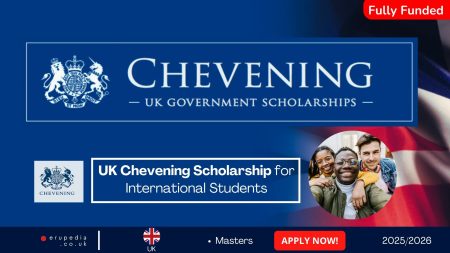As we head into the 2026–2027 academic year, more U.S. institutions are stepping up to support international students through financial aid based on demonstrated need, not just academic performance. Whether you’re from Nigeria, India, Brazil, or Vietnam, if your financial background limits your ability to pay, that’s where need-based scholarships come in.
In this guide, we’ll break down the top universities that offer need-based financial aid, what “need-blind” (need based) really means, and how you can increase your chances of receiving aid for the 2026–2027 academic year.
What Are Need-Based Scholarships?
Need-based scholarships are financial awards given to students based on their financial situation—not academic merit. In simple terms, if you can prove that your family cannot afford the full cost of studying in the U.S., some institutions and scholarship bodies will cover part or all of your expenses.
Unlike merit-based scholarships, which reward top academic or athletic performance, need-based aid focuses on your economic background. This is often assessed through documents like income statements, bank records, or a completed CSS Profile.
Key Benefit: They make U.S. education possible for students who may not have top grades but have the drive and potential to succeed.
🇺🇸 Top Need-Based Scholarships for International Students in the U.S. (2026–2027)
Below are some of the most generous and reputable U.S. universities offering need-based aid for international students:
1. Harvard University International Student Financial Aid
- Covers 100% of demonstrated need (tuition, housing, books)
- No income cut-off; each case is individually reviewed
- Undergraduate international students are automatically considered
- Families earning under $85,000 typically pay nothing.
- Deadline: January
- Apply here
Harvard uses a need-blind admissions policy; your ability to pay doesn’t impact your acceptance.
2. Yale University Need-Based Aid for Internationals
- Meets 100% of demonstrated need without loans
- Uses the CSS Profile for financial aid assessment
- Aid packages include grants and work-study options
- International students are treated equally as U.S. applicants.
- EEAT Trust Factor: Yale is known globally for its transparent and equitable funding
- Apply Here
3. Amherst College Financial Aid
- Offers need-aware admissions but generous aid once admitted
- Full-need coverage for all admitted international students
- Requires submission of CSS Profile and supporting financial documents
- Apply Here
4. Columbia University Financial Aid
- Offers both need-based and merit-based aid
- Popular among international students in STEM and business
- Combines grants with work-study opportunities
- Apply Here
5. University of Pennsylvania (Penn Global Scholarships)
- Comprehensive funding for low-income international students
- Can be combined with external grants or country-specific awards
- Need-based aid available for all programs including Wharton
- Apply Here
6. NYU Wagner International Fellowships (Graduate-Level)
- Designed for students in public service and policy programs
- Combines need and merit considerations
- Includes tuition waiver, stipend, and leadership development
- Check and apply here
7. Princeton University
- Need-blind for international students.
- Offers generous need based financial aid without loans.
- Check now and apply
8. Massachusetts Institute of Technology (MIT)
- Committed to full-need met.
- Need-blind admissions apply to all students, regardless of nationality.
- Apply here
How to Qualify and Apply for Need-Based Financial Aid
Step-by-Step Tips:
- Research early: Deadlines for 2026–2027 can be as early as October.
- Prepare financial documents: Income statements, tax returns, and bank statements are essential.
- Use the CSS Profile: Many U.S. universities use this to evaluate international student aid eligibility.
- Be honest about your financial situation: Universities can spot inconsistent information.
- Write a strong personal statement: Explain why you need aid and how it supports your goals.
- Submit on time and follow up if needed
- Use tools like CollegeBoard CSS Profile early to avoid deadline stress.
When applying, make sure your documents reflect international student need based financial aid eligibility clearly and convincingly.
Need-Based vs Merit-Based: What Should You Choose?
If your financial situation is a barrier, need-based scholarships are your best path. However, there’s no rule against applying for both. Some students secure both a need blind scholarship and a merit-based grant, reducing their personal expenses even more.
Common Myths About Need-Based scholarship Debunked
- “Only U.S. citizens can apply” – False. Many universities and programs accept international students and offer generous aid.
- “Need-blind means free tuition” – Not always. You must still apply for aid separately and demonstrate financial need.
- “You must be poor to qualify” – Not true. It’s about “demonstrated need,” not absolute poverty.
Start Today
If you’re serious about studying in the U.S. in 2026–2027 but worried about the cost, need-based scholarships are your best bet.
Take action, do your personal research, and apply smart. Financial need is not a limitation; it’s just the start of your journey toward a fully funded education in the U.S. Start your journey now. The earlier you prepare, the better your chances.


